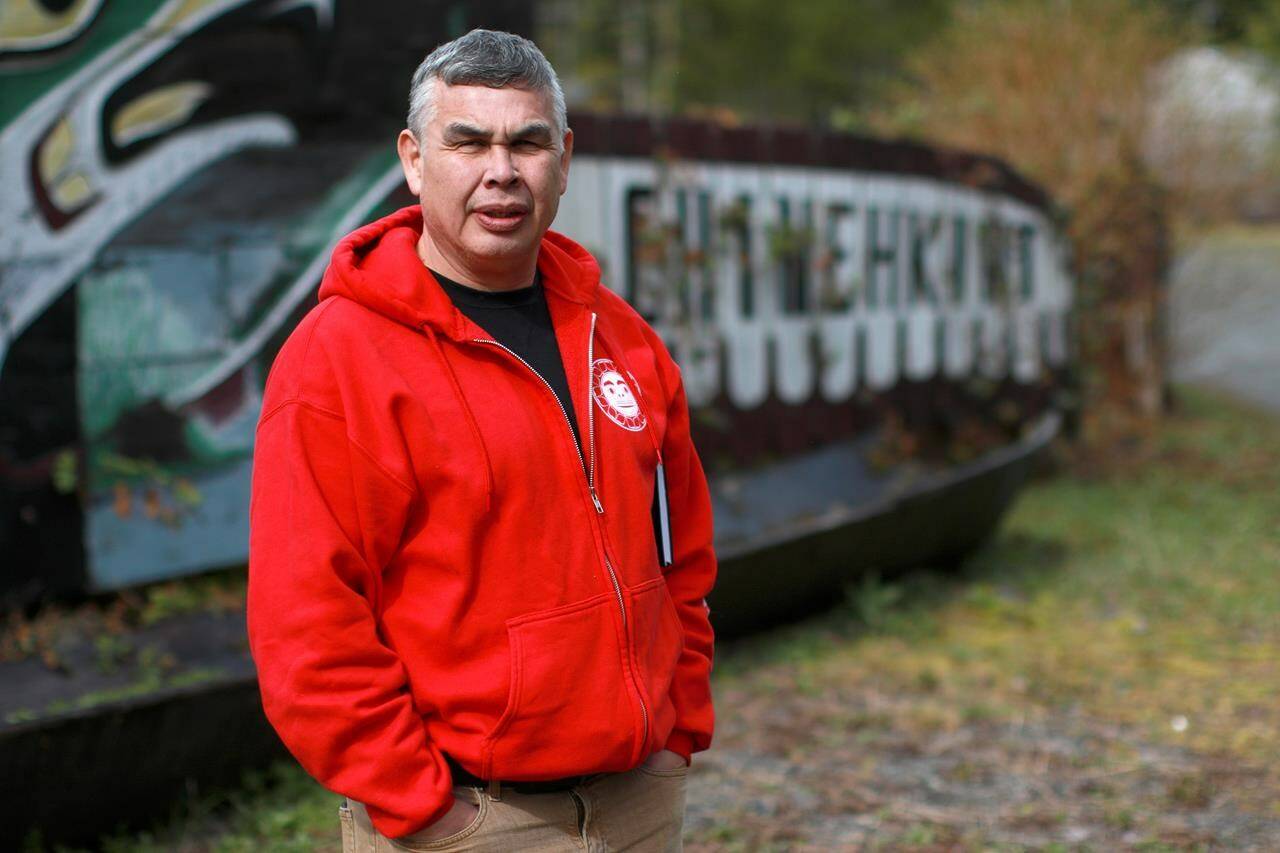Ehattesaht First Nation Chief Simon John says a highly orchestrated attempt to rescue a killer whale calf stranded in a Vancouver Island lagoon could happen as early as next week.
He says the clock is ticking to save the two-year-old orca calf which has been alone in the lagoon at Little Espinosa Inlet since March 23, when its pregnant mother became trapped on a rocky beach at low tide and died.
John says equipment for the planned rescue has started to arrive in the remote community of Zeballos, located more than 450 kilometres north of Victoria.
He says a large seine net more than 270 metres long arrived from Campbell River Thursday and is expected to be used to corral the young killer whale in a shallow area of the lagoon.
John says the rescue team is also expecting the Sunday arrival of a net pen similar to those used at B.C. salmon farms to house the young orca at a yet-to-be-determined ocean location.
The timer has been set to save the young orca’s life, First Nations leaders and a federal Fisheries Department marine mammal expert said Thursday.
The complicated move could involve a crane, a specially outfitted truck and a landing craft or boat. A previous plan to airlift the whale with a helicopter is now taking a back seat, although it remains an option, said Paul Cottrell, a marine mammal co-ordinator with the Fisheries Department.
Once the whale is in the pen, it will be kept at a location its extended family is known to frequent, in hopes of a reunion when it is finally freed.
“I think it’s probably going to be within the week because of the health of the killer whale,” John said of the operation. “There’s going to be three or four stages related to capturing it. There’s several barriers that will be deployed.”
The distance of the move can’t be worked out until the location of capture and release into the pen are decided.
Cottrell said there is still much to organize before the rescue team tries to capture the calf and transport it out of the lagoon.
“You can appreciate the complications on the logistics,” he said. “We want to do this as safe as possible for the whale, but also for the people involved. We’re piecing all this together in quite a short amount of time. We’re going to undertake the rescue when it’s safe to do so but also taking into consideration how the animal’s doing.”
John said helicopters were available to the nation, but the airlift that had been discussed on Wednesday was “not the optimum opportunity currently.”
Cottrell said a helicopter airlift was “a tool in our tool box and it’s an option we can look at, but we’re looking at other options as well in terms of using a sling onto a vehicle then moving the animal that way to either a landing craft or a vessel that can move the animal to a net pen.”
He said numerous variables could affect the rescue attempt, including the weather.
“We’re moving to this next phase of capture and transport and reunification with its pod,” Cottrell said. “We’re doing a great amount of work to make that happen. Time is of the essence for this calf, we know that, and the planning is well along, but we do have a little bit more planning, equipment and logistics to work out.”
The calf has been stranded near Little Espinosa Inlet since March 23, when its pregnant mother became trapped on a rocky beach at low tide and died. The drama is unfolding near the tiny village of Zeballos, population 200.
Fisheries Department officials, the Ehattesaht First Nation and marine mammal rescue experts have been meeting daily about the orca calf. They are convinced the only way to save it is to capture and transport it from the three-kilometre-long tidal lagoon to the ocean.
John said attempts to entice the young whale to leave the lagoon on its own via a shallow and swiftly running channel to the ocean have not been successful and the nation wants to take every opportunity available to save its life.
“The whole plan, through the whole process, has been to reunite it with its pod,” he said. “It needs assistance. It’s so young.”
Officials aren’t sure if the whale has been feeding and set out the remains of a harbour seal this week. While the seal meat disappeared, they aren’t sure if the calf ate it.
Rescue team members were out in boats again Thursday, hoping to feed seal remains to the calf, which has been seen with a bird in its mouth. There were indications the calf, thought to be about two years old, had been supplementing its diet with its mother’s milk before it died.
Bigg’s killer whales, like this calf, are mammal eaters, unlike the resident orcas of B.C.’s coast which eat fish.
The calf appears in good health, spending much of its time in a midsection of the lagoon, surfacing every five to 10 minutes, said Fisheries Department officials who have been monitoring the orca with drones and boats.
The First Nation said a wide range of equipment and technology has been made available for the rescue effort, including helicopters, drones, trucks, excavators, boats and advanced equipment to provide remote sensing and land surveying.
The last time members of the calf’s pod were spotted was Sunday near Ucluelet, which is also on Vancouver Island’s west coast but about 150 kilometres south of Zeballos.
Cedar boughs placed by the First Nations residents, who have named the orca calf kwiisahi?is, or Little Brave Hunter, hang from a bridge that the young orca must swim under, while a bouquet of flowers rests at the roadside where locals and visitors are keeping vigil.
READ ALSO: Rescuers to lift stranded orca out of B.C. lagoon to reunite it with family
READ ALSO: Beached orca on Vancouver Island was pregnant, DFO necropsy says

